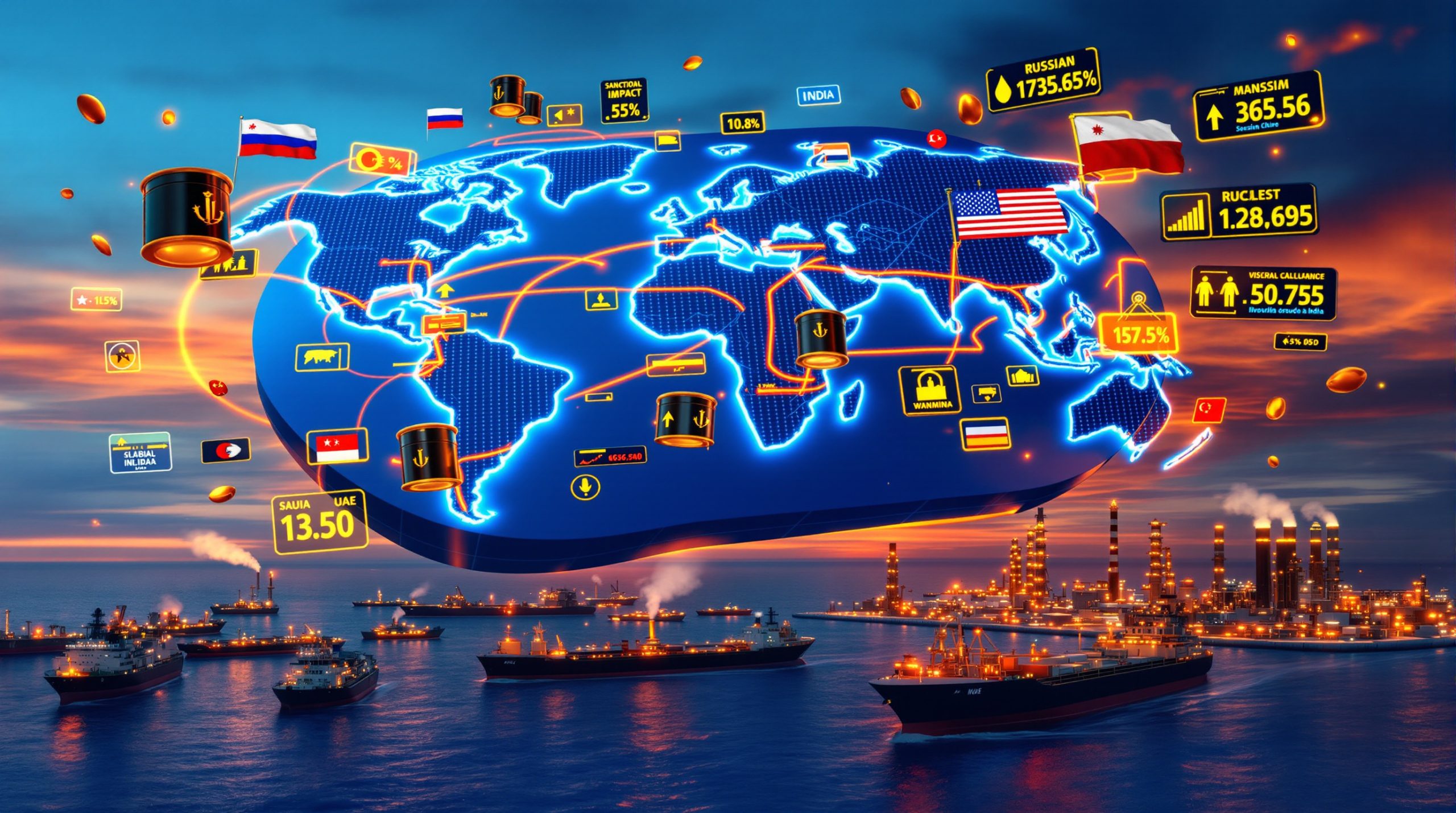Critical Production Disruptions Reshape European Markets
The EU aluminum supply shortage faces unprecedented challenges as multiple production facilities experience significant operational difficulties. Iceland's Grundartangi facility has reduced output by approximately 213,000 tons annually following electrical infrastructure failures that struck in late October 2024. This 320,000-ton-per-year facility, owned by Century Aluminum, cut production by two-thirds due to electrical equipment failure.
Furthermore, the disruption creates a substantial gap in Europe's accessible supply chain, particularly significant given Iceland's position as the EU's second-biggest aluminum supplier in the first eight months of 2024, providing 241,412 tons to the bloc. Meanwhile, Mozambique maintained its position as the top supplier with 337,670 tons shipped during the same period, though uncertainty surrounds the long-term stability of this supply source.
Recovery timelines remain extended, with complete transformer replacement requiring an estimated 11-12 months for manufacturing, shipping, and installation. Century CEO Jesse Gary indicated during an earnings call that the potline could potentially restart sooner only if failed transformers can be repaired rather than replaced entirely.
Energy Cost Pressures Force Domestic Capacity Reductions
European primary aluminum production has contracted significantly over recent years, with capacity reductions driven primarily by escalating energy expenses and regulatory compliance costs. This structural shift forces the bloc to import approximately two-thirds of its aluminum requirements, creating heightened vulnerability to external supply shocks.
The energy-intensive nature of aluminum smelting makes European producers particularly susceptible to elevated power costs compared to regions with access to cheaper hydroelectric or natural gas supplies. However, these decarbonisation benefits have forced strategic capacity reductions rather than temporary production adjustments, fundamentally altering Europe's supply security position.
Key factors driving capacity reductions include:
- Escalating electricity costs across European markets
- Regulatory compliance expenses related to environmental standards
- Competition from low-cost international producers with energy advantages
- Carbon pricing pressures affecting operational economics
Carbon Regulations Fundamentally Alter Trade Economics
CBAM Implementation Creates New Import Cost Structure
The Carbon Border Adjustment Mechanism introduces carbon pricing for aluminum imports beginning January 1, 2026, fundamentally transforming trade economics across global supply chains. While reporting requirements commence in 2026, actual payment obligations begin January 1, 2027, providing importers with transition time to adjust sourcing strategies.
Consequently, Middle Eastern and Canadian producers face estimated charges of €10-50 per ton due to their relatively efficient production methods and lower direct emissions intensity. This pricing structure reflects the mechanism's design to charge based on the emissions profile of specific aluminum smelters rather than applying uniform tariffs across regions.
According to Nick Ogilvie, CBAM Lead at CarbonChain, the carbon pricing creates a bifurcated market where production methodology directly determines market access. For instance, facilities utilising very old technology may find their products economically unviable for European markets, potentially forcing complete withdrawal from EU supply chains.
CBAM charges vary significantly by production facility:
| Producer Type | Estimated CBAM Cost | Market Impact |
|---|---|---|
| Modern Middle Eastern facilities | €10-20/ton | Minimal competitive impact |
| Canadian hydroelectric operations | €10-30/ton | Maintained market access |
| Advanced technology smelters | €15-35/ton | Competitive positioning preserved |
| Older technology facilities | €40-100+/ton | Potential market exit |
Strategic Front-Loading Drives Current Demand Surge
European importers are accelerating purchase schedules to avoid future carbon costs and administrative complexities associated with CBAM compliance. This front-loading strategy contributes significantly to current market tightness and premium price increases.
European aluminum duty-paid premiums have reached $324 per ton, hitting $330 on November 3, 2024, representing nine-month highs and approximately 30% above typical historical levels. These premiums reflect not just underlying supply constraints but also strategic purchasing decisions based on predicted regulatory costs.
Wood Mackenzie aluminum research director Edgardo Gelsomino, citing conversations with traders, indicates that importers pursue front-loading for dual strategic purposes: avoiding future carbon costs while reducing administrative burden associated with new regulatory compliance requirements. Furthermore, the US aluminium tariffs impact adds additional complexity to global trade flows.
The front-loading phenomenon demonstrates market participants making purchasing decisions based on anticipated regulatory costs rather than immediate consumption needs, artificially tightening current supply-demand dynamics through 2025.
Scrap Metal Constraints Compound Supply Challenges
Trade Diversions Disrupt European Recycling Operations
European scrap aluminum availability has declined as material flows redirect toward alternative markets, reducing feedstock for European recycling facilities. These diversions eliminate traditionally cost-effective supply sources precisely when primary aluminum imports face increased costs and regulatory complexity.
Secondary production constraints limit supply flexibility, as reduced scrap availability forces greater reliance on primary aluminum imports at elevated costs. This limitation becomes particularly problematic as European manufacturers seek alternatives to offset CBAM-related cost increases, creating supply chain crisis insights throughout the industry.
The scrap shortage creates cascading effects throughout the aluminum supply chain:
- Reduced recycling facility utilisation across European operations
- Higher effective material costs as primary aluminum substitutes for recycled content
- Supply chain inflexibility during periods of primary production disruption
- Increased import dependency for both primary and secondary aluminum sources
EEA Producers Maintain Regulatory Advantages
Norwegian and Icelandic aluminum producers, operating within the European Economic Area, avoid CBAM charges while maintaining access to renewable energy sources. Metal produced by Norsk Hydro in Norway and smelters in Iceland, as part of the EEA, will not be subject to the carbon border charge.
This regulatory positioning creates structural competitive advantages for Nordic suppliers despite current production challenges at facilities like Grundartangi. EEA membership provides regulatory arbitrage benefits independent of operational efficiency or production costs.
Low-Carbon International Sources Emerge as Preferred Partners
Aluminum producers utilising renewable energy transformations or advanced emission reduction technologies face minimal CBAM penalties, potentially reshaping long-term supply relationships. Canadian hydroelectric-powered facilities and select Middle Eastern operations using cleaner energy sources maintain competitive positioning under the new regulatory framework.
The carbon-conscious sourcing trend extends beyond CBAM compliance, as European buyers increasingly incorporate carbon footprint considerations into supply decisions. This shift creates market preference for low-emission producers independent of carbon pricing mechanisms.
Competitive positioning by producer type:
- Norwegian hydro-powered operations: CBAM exempt, low operational costs
- Icelandic geothermal facilities: EEA benefits, renewable energy access
- Canadian hydroelectric producers: Low CBAM costs (€10-30/ton range)
- Modern Middle Eastern operations: Efficient technology, manageable carbon costs
- Traditional high-emission facilities: Potential market exit due to uncompetitive pricing
Manufacturing Competitiveness Faces Long-Term Pressure
Premium Price Escalation Affects Industrial Users
Current aluminum premiums exceeding $320 per ton above London Metal Exchange prices represent significant cost increases for European manufacturers across automotive, construction, and packaging industries. These elevated costs may force production relocations or material substitution strategies as companies adapt to permanently higher input expenses.
The premium escalation reflects supply tightness rather than LME price increases, indicating physical aluminum shortage rather than financial market movements. Duty-paid premiums comprise multiple cost components including carbon taxes, freight costs, insurance, handling charges, and normal trader margins. Additionally, the aluminum market turmoil further complicates pricing structures.
Industrial sectors face varying degrees of impact based on aluminum intensity:
- Automotive manufacturers: Increased costs for aluminum body panels and engine components
- Construction sector: Higher expenses for window frames and structural components
- Packaging industry: Reduced profit margins on aluminum-intensive products
- Aerospace applications: Premium materials costs affecting component pricing
Supply Security Concerns Drive Strategic Reassessment
European policymakers and industrial users are reevaluating aluminum supply security, potentially leading to domestic production incentives or strategic stockpiling initiatives. The current crisis highlights vulnerabilities in critical material supply chains essential for green technology manufacturing, including electric vehicles, renewable energy components, and advanced manufacturing applications.
The EU aluminum supply shortage connects directly to broader energy transition security concerns across multiple industries. According to Boston Consulting Group, addressing aluminum's supply shortage requires coordinated action across six key areas including capacity expansion and recycling improvements.
Disclaimer: Policy assessments and strategic recommendations involve forecasts and assumptions that may not materialise as expected. Supply chain security initiatives require substantial investment and regulatory coordination across multiple jurisdictions.
Strategic reassessment considerations include:
- Domestic production incentive programmes to reduce import dependency
- Strategic aluminum reserves to buffer against future supply shocks
- Supply chain diversification strategies across multiple geographic regions
- Long-term contracting frameworks with reliable low-carbon suppliers
Market Evolution Through 2026 and Beyond
Production Recovery Timelines Remain Extended
Iceland's Grundartangi facility requires 11-12 months for complete transformer replacement, suggesting continued supply constraints through late 2025. Alternative repair scenarios could accelerate recovery, but uncertainty persists regarding exact timelines and capacity restoration levels.
The extended recovery timeline coincides with CBAM implementation, creating a period of dual supply pressure from reduced capacity and regulatory transition. This convergence may sustain elevated premiums and supply chain stress throughout 2025.
CBAM Full Implementation Creates Permanent Market Shift
The transition from CBAM reporting requirements (2026) to actual payment obligations (2027) will permanently alter aluminum trade flows. High-emission producers may exit European markets entirely, while low-carbon suppliers gain enhanced market access and pricing power.
Timeline of regulatory and market changes:
| Period | Key Developments | Market Impact |
|---|---|---|
| 2024-2025 | Front-loading purchases, supply constraints | Elevated premiums, tight markets |
| January 2026 | CBAM reporting begins | Administrative burden, sourcing shifts |
| January 2027 | CBAM payments commence | Permanent cost structure changes |
| 2027+ | New trade equilibrium | Restructured supplier landscape |
Key market indicators to monitor:
- Premium sustainability above $300/ton levels through 2025
- Producer announcements regarding European market participation
- Policy responses from EU member states on supply security
- Industrial demand patterns amid elevated input costs
Investment Disclaimer: Aluminum market forecasts involve substantial uncertainty regarding production recovery timelines, regulatory implementation, and demand response patterns. Market participants should conduct independent analysis before making investment or sourcing decisions based on projected supply-demand dynamics.
The EU aluminum supply shortage represents a confluence of infrastructure challenges, regulatory transformation, and strategic sourcing decisions that collectively reshape European aluminum markets. While short-term supply constraints may ease with production recovery, CBAM implementation creates permanent structural changes favouring low-carbon producers and penalising high-emission facilities. European manufacturers face sustained cost pressures requiring strategic adaptation to new market realities through 2026 and beyond.
Looking to Profit from Critical Mineral Supply Chain Disruptions?
Discovery Alert's proprietary Discovery IQ model delivers instant notifications on significant ASX mineral discoveries, including aluminium and critical metal opportunities that emerge from global supply chain disruptions like Europe's current shortage. Explore Discovery Alert's dedicated discoveries page to understand how major mineral discoveries have generated substantial returns for early investors, then begin your 30-day free trial today to position yourself ahead of market-moving announcements.




